Making Squeaky Cheese Curds
Perfecting the squeak requires a mesh of long, elastic protein strands that rub against your teeth enamel.
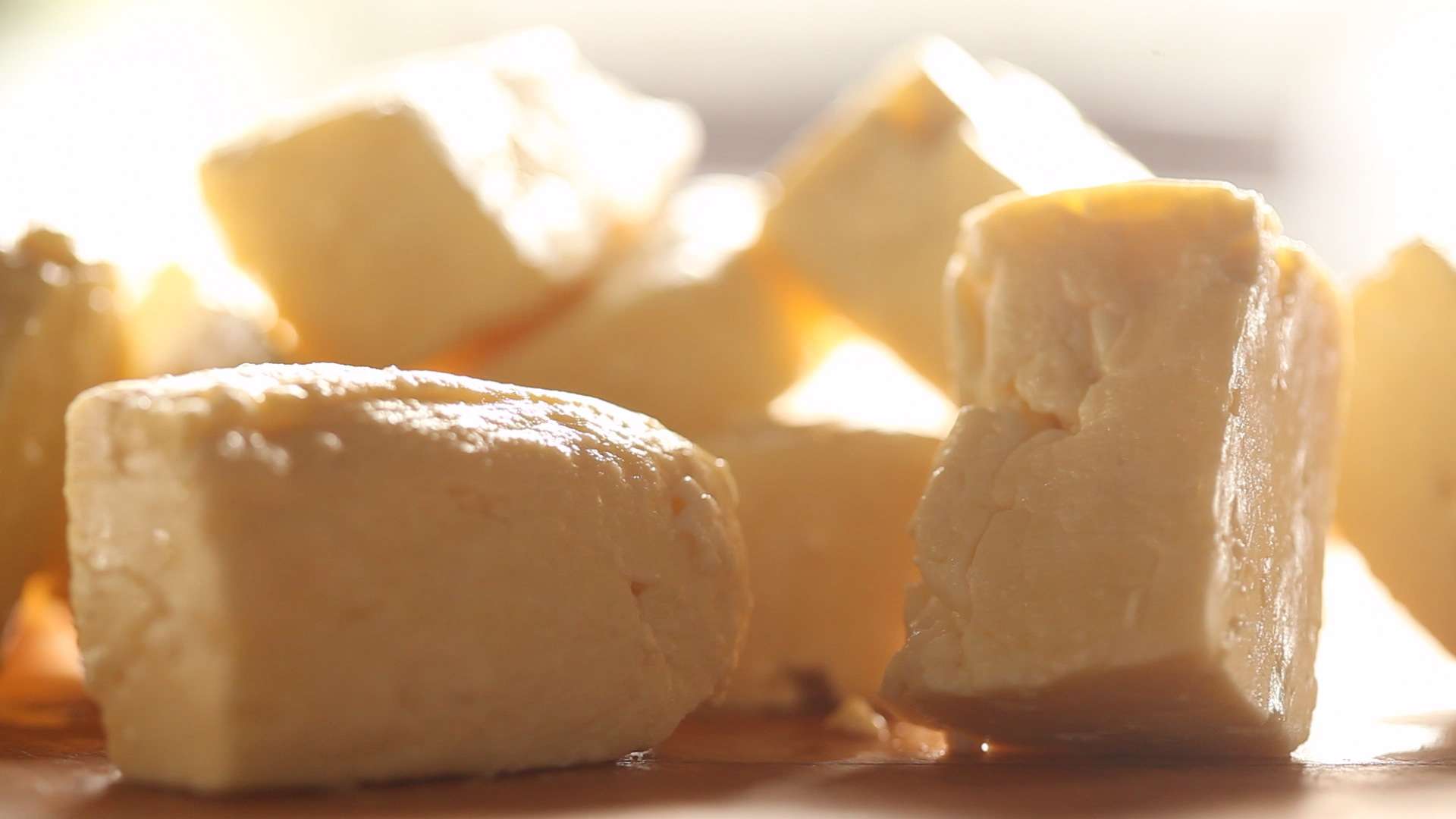
Photo courtesy of ChefSteps.
The following recipe is republished with permission from ChefSteps, a Seattle-based food and technology company on a mission to help people cook smarter.
The squeak of fresh cheese curds is as popular as it is elusive—it’s gone after about a day after they’re made. Perfecting the squeak, however, requires more than just fresh curds. The secret is a technique called cheddaring that forms a curd held together with long, elastic proteins. Cheese scientists have discovered that it’s these fresh, elongated protein strands rubbing against the enamel of your teeth that is the real source of a cheese curd’s squeak.
1000 g
Pour milk into SousVide Supreme, and set temperature to 91 °F / 33 °C.
Once temperature is reached, start a timer for 30 minutes.
Sterilize utensils—whisk, curd cutter, and slotted spoon—by using a blowtorch, or by boiling for 5 minutes and drying with a paper towel.
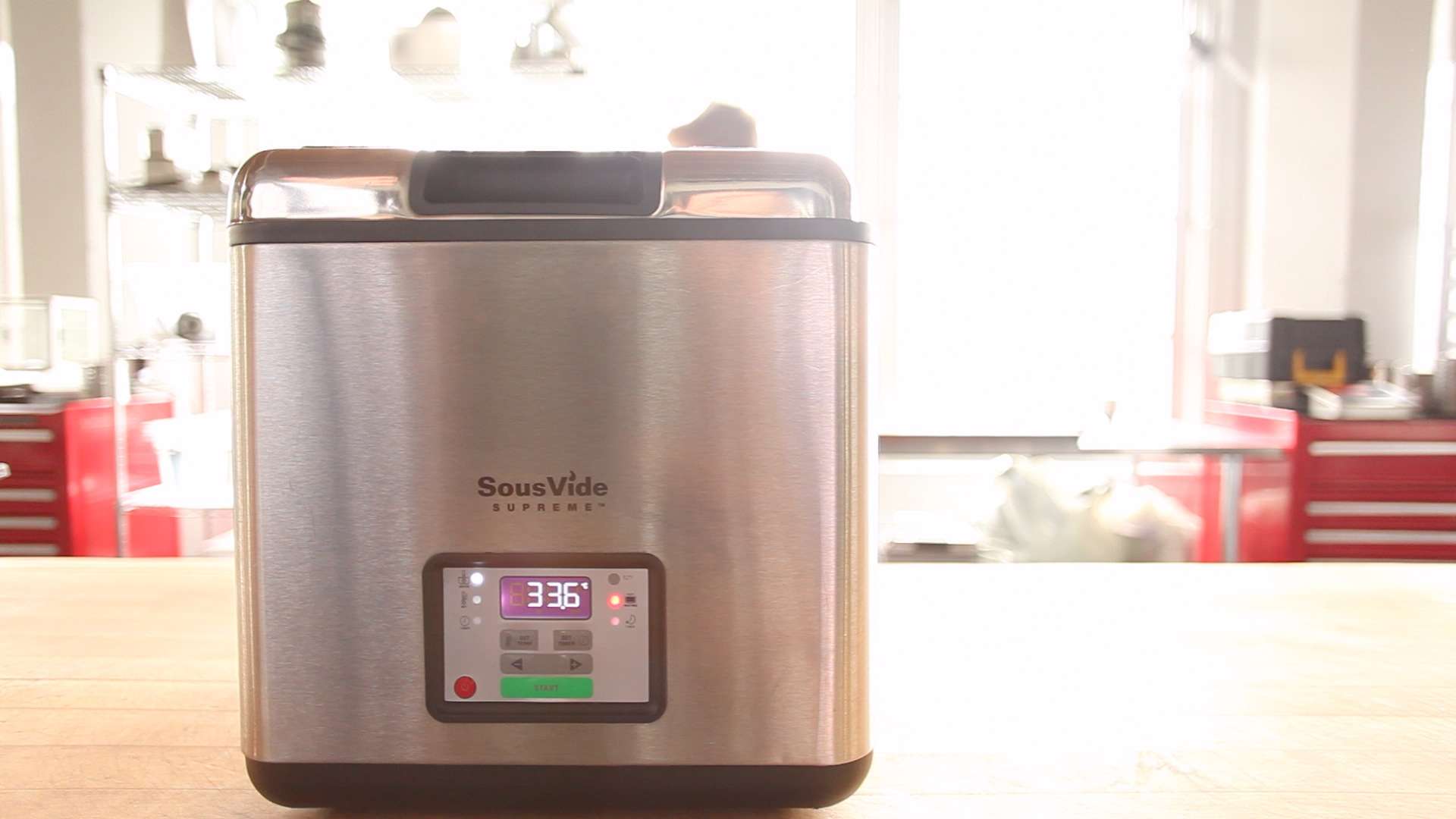
Photo courtesy of ChefSteps.
Dissolve calcium chloride into 100 g filtered water.
Pour calcium solution into milk, and stir for 30 seconds.
If using raw milk, this step can be skipped because there is already enough free calcium present in the milk.
Most cheesemakers prefer to add calcium chloride to restore free calcium depleted during pasteurization and storage. Free calcium increases the interaction of dairy proteins for a stronger curd.
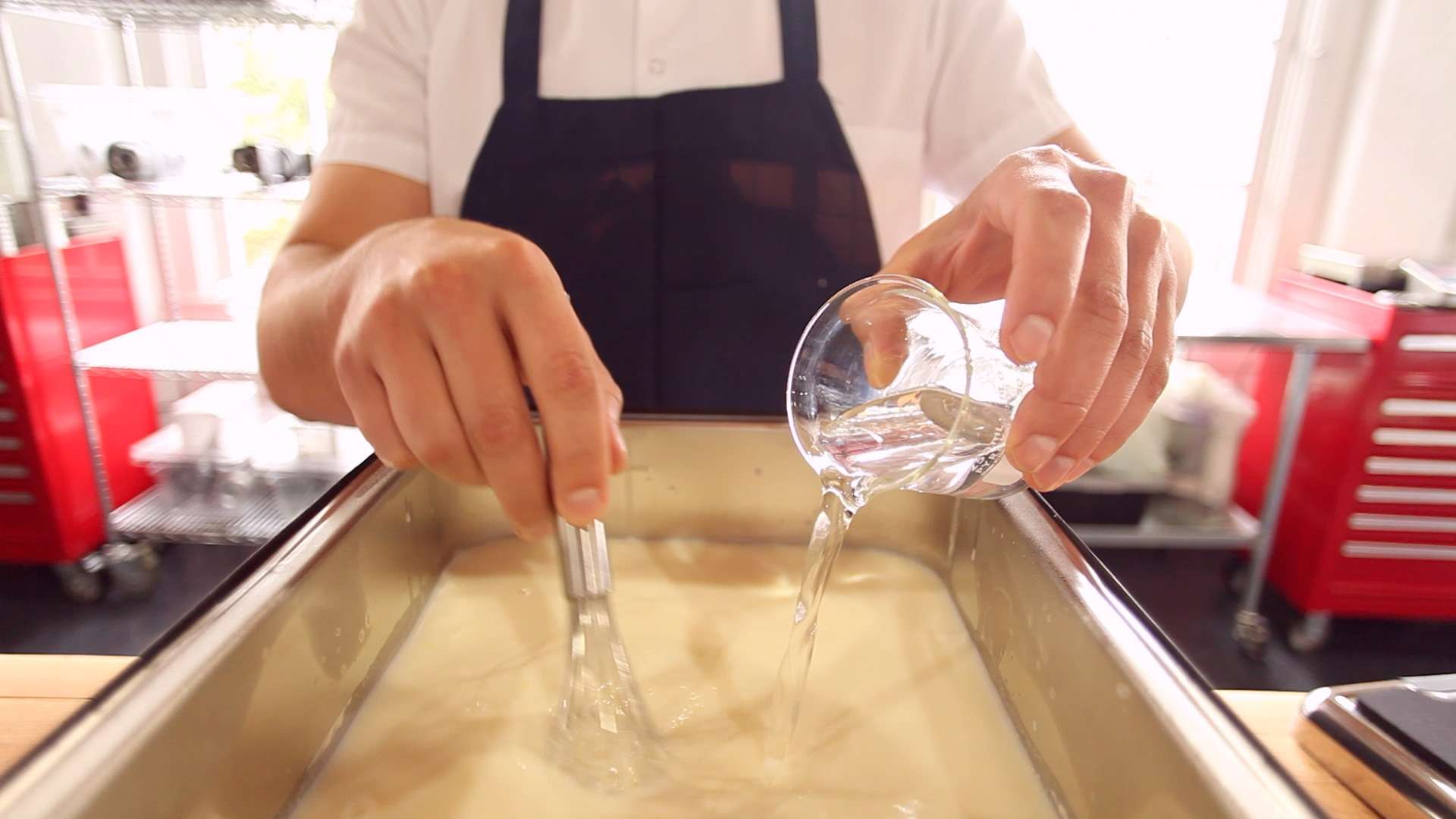
Photo courtesy of ChefSteps.
Sprinkle culture into milk, and stir to dissolve completely.
Cook for 30 minutes.
The previous three steps causes milk proteins to begin to denature so that adding rennet later will create a cohesive curd.
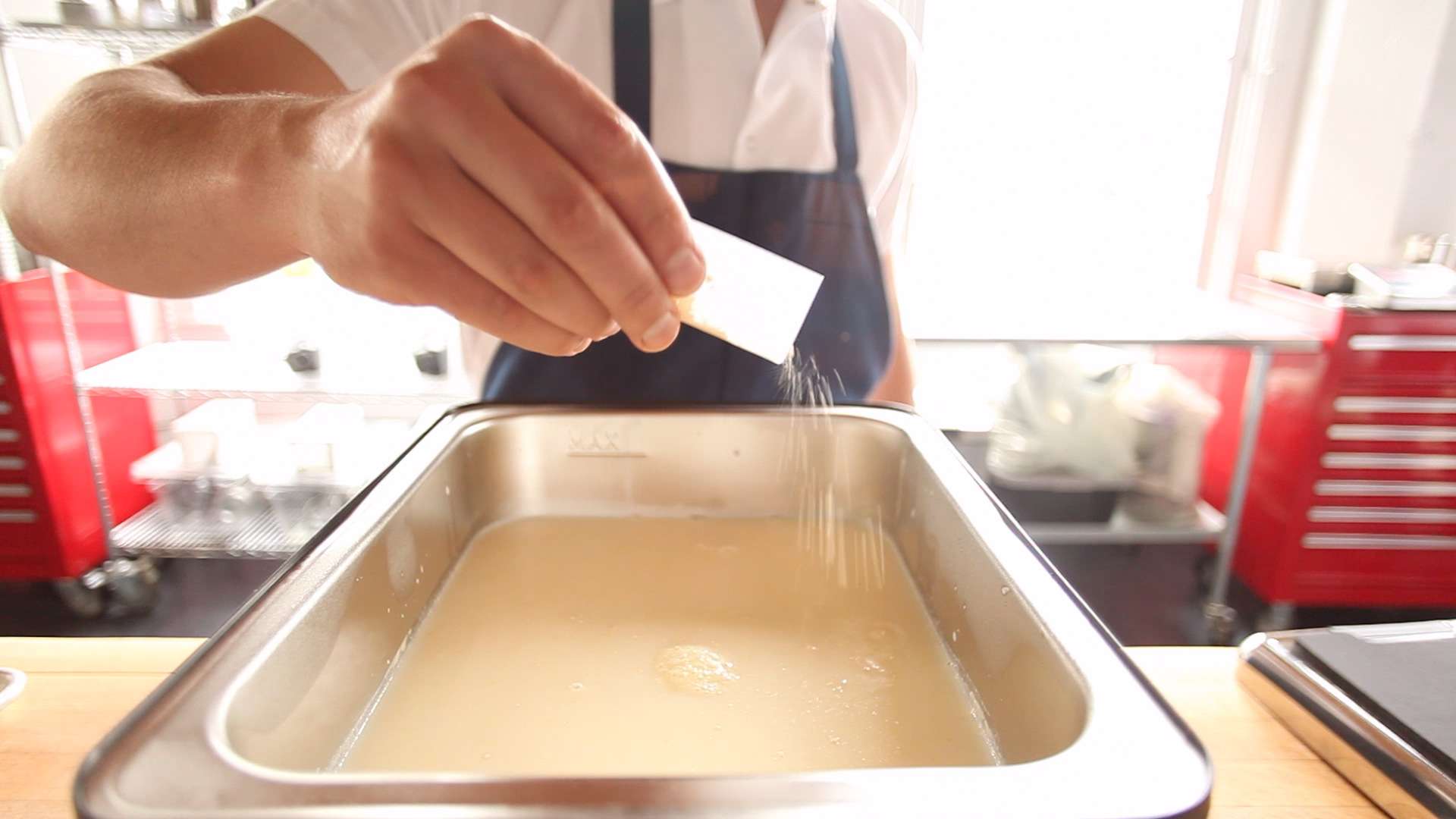
Photo courtesy of ChefSteps.
Crush rennet tablet, and dissolve into 40 g filtered water.
Pour into milk, and stir for 1 minute.
Cook for 1 hour.
By the end of an hour, curds form that should break clean. This means that when a blade or stick is inserted into the curd at an angle and then removed, there is no curdled milk clinging to the object.
Cut curds into cubes, using a curd cutter or a curd knife, no smaller than .5 cm and no larger than 1 cm.
Most cheese makers cut the curds in one direction, then cut them again 90° to the original cuts. Finally, they insert the knife at a 45° angle parallel to the original cuts to form uniform blocks. Cutting into equally sized pieces is important; it lets the whey drain from the curds evenly.
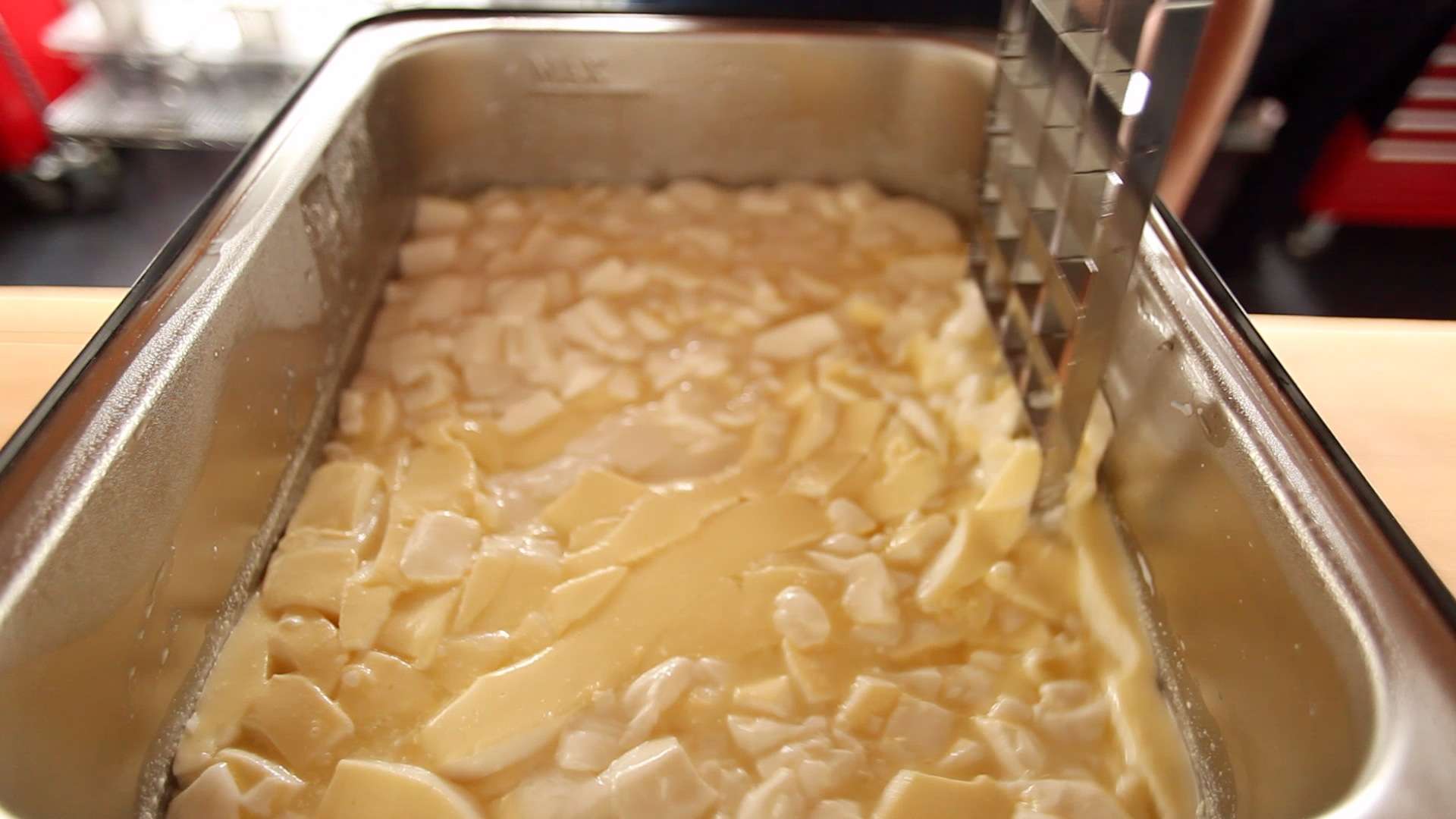
Photo courtesy of ChefSteps.
Set SousVide Supreme to 95 °F / 35 °C.
Cook curds for 1 hour and 40 minutes, stirring gently every 10 minutes.
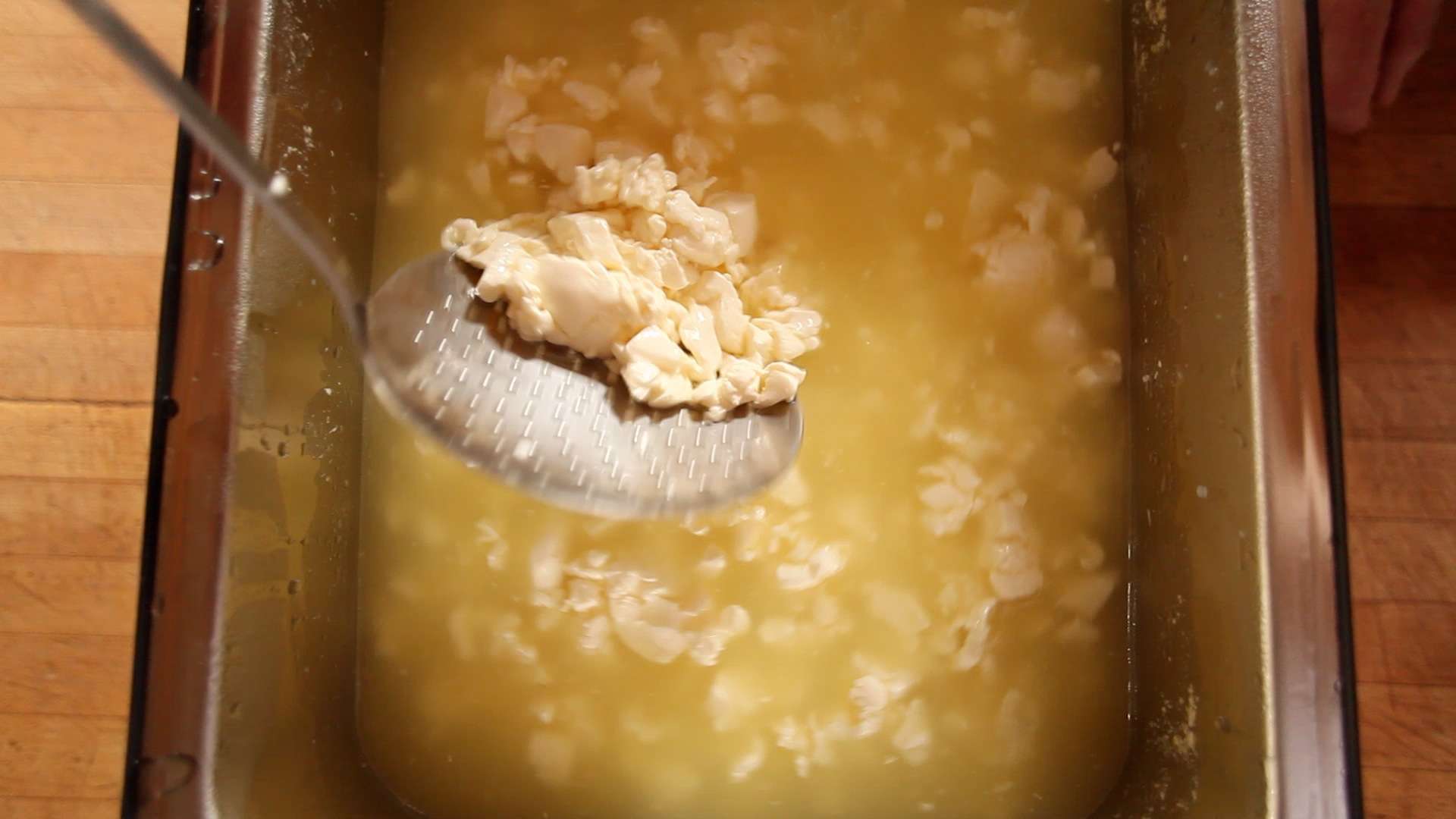
Photo courtesy of ChefSteps.
Line perforated pan with cheese cloth. Set into second pan to catch liquid.
Using a slotted spoon, gently transfer curds to perforated pan to drain. Leave the whey in the SousVide Supreme.
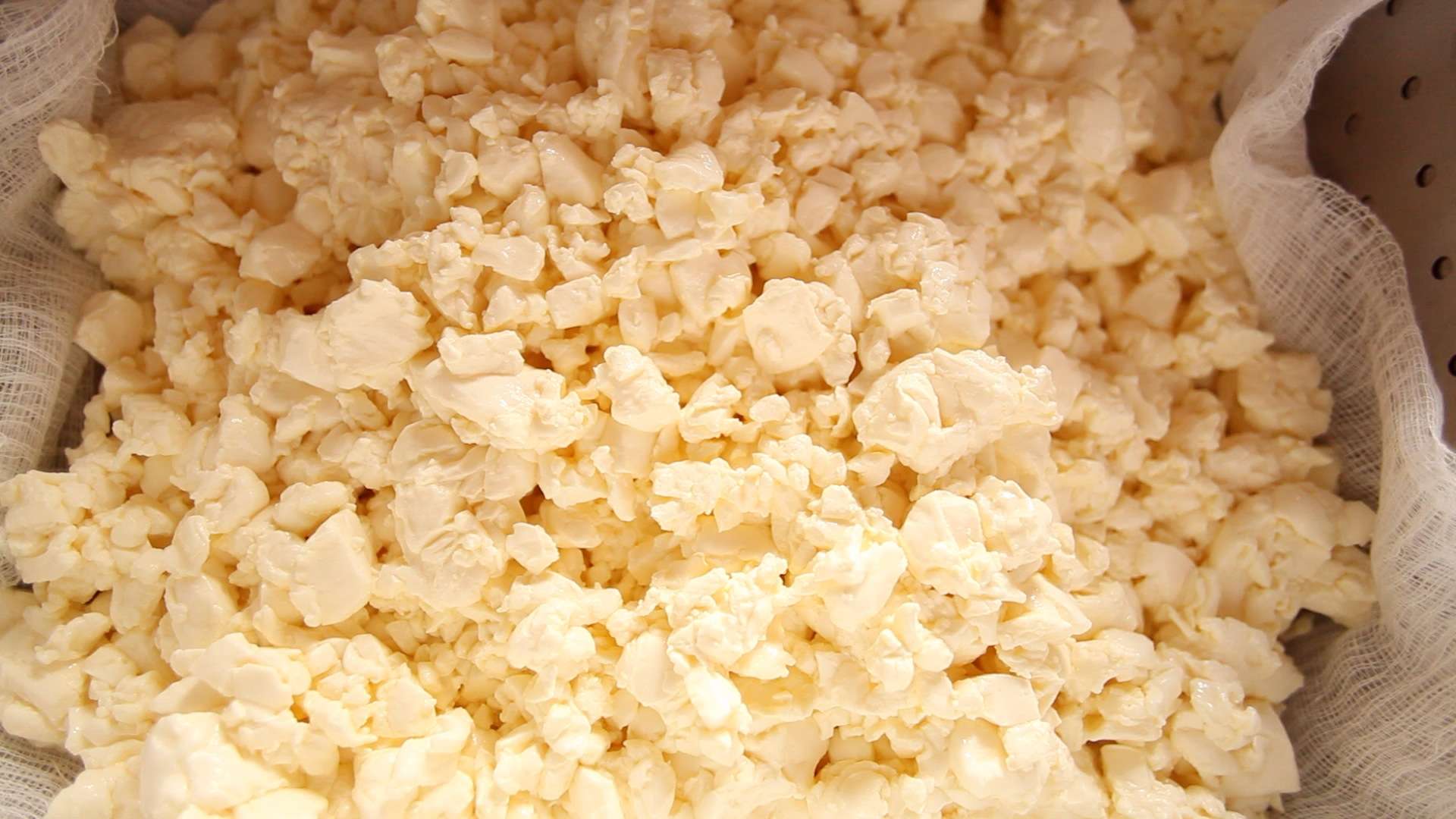
Photo courtesy of ChefSteps.
Fold cheesecloth over drained curds to cover them, and place pan into SousVide Supreme. The whey should not touch the pan; ladle out whey if needed.
Set temperature to 113 °F / 45 °C, which will steam the curds at an air temperature of about 108 °F / 42 °C.
Cook for 10 minutes.
Heating the curds allows the strands of proteins to cross-link and knit the curd together. Doing this prepares the curds for the “cheddaring” process that is crucial to getting the squeak into your curds. Cheddaring involves “ditching” the curd mass into slabs, stacking and flipping them, and repeating this stacking and flipping to expel whey trapped between grains of curd and to develop the cohesive texture of squeaky cheese curds.
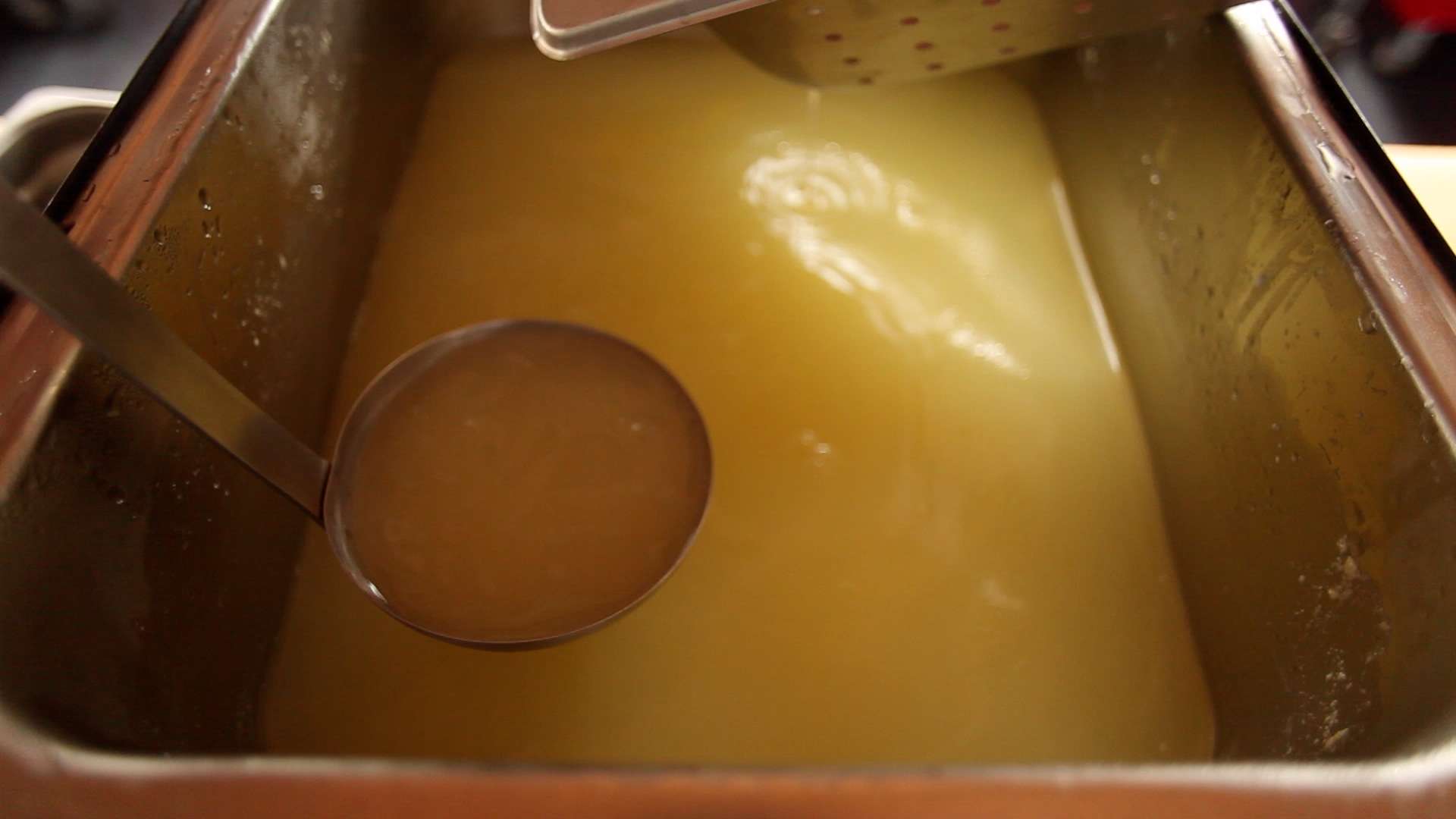
Photo courtesy of ChefSteps.
Cut matted curds in half widthwise.
Flip half of the loaf onto the other half.
Cover with cheesecloth, replace lid, and cook for 15 minutes.
Cut curds into thirds lengthwise.
Flip each loaf over.
Cover with cheesecloth, replace lid, and cook for 15 minutes.
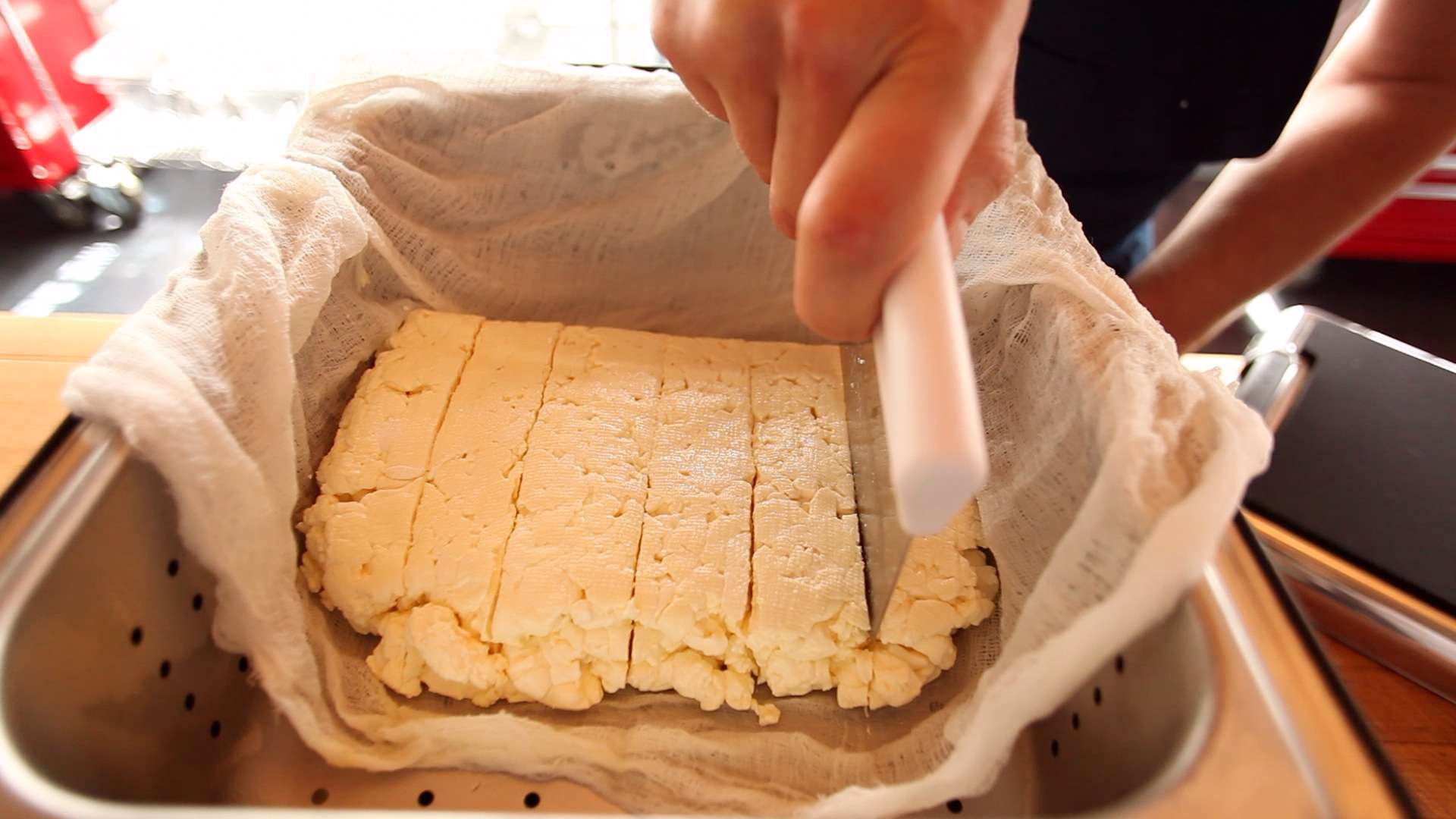
Photo courtesy of ChefSteps.
Cut each loaf in half lengthwise.
Flip three loaves on top of the other three.
Cover with cheesecloth, replace lid, and cook for 15 minutes.
Rotate loaves so the outer surfaces are now on the inside.
Cover with cheesecloth, replace lid, and cook for 15 minutes.
Flip loaves so tops are now on bottom.
Cover with cheesecloth, replace lid, and cook for 15 minutes.
Cut loaves into curds, weigh, and place in covered container.
Add salt, 1% by weight of finished curds, and shake vigorously. All of the salt should be absorbed into the curds.
Salt not only makes them taste great, but actually keeps them from losing their squeak for about a day.
Even with salting, lactic acid bacteria in the cheese curds will continue to lower the pH, breaking down the long strands of proteins into smaller fragments, which don’t have enough elastic strength to squeak under the bite of your teeth.
You can reinvigorate some of the squeakiness by gently reheating the curds—a burst of microwave is ideal for this. Heating helps proteins reform some of those important long strands that imbue the curd with squeak. But careful you don’t over do it; go too far, and you’ll simply melt the curd.
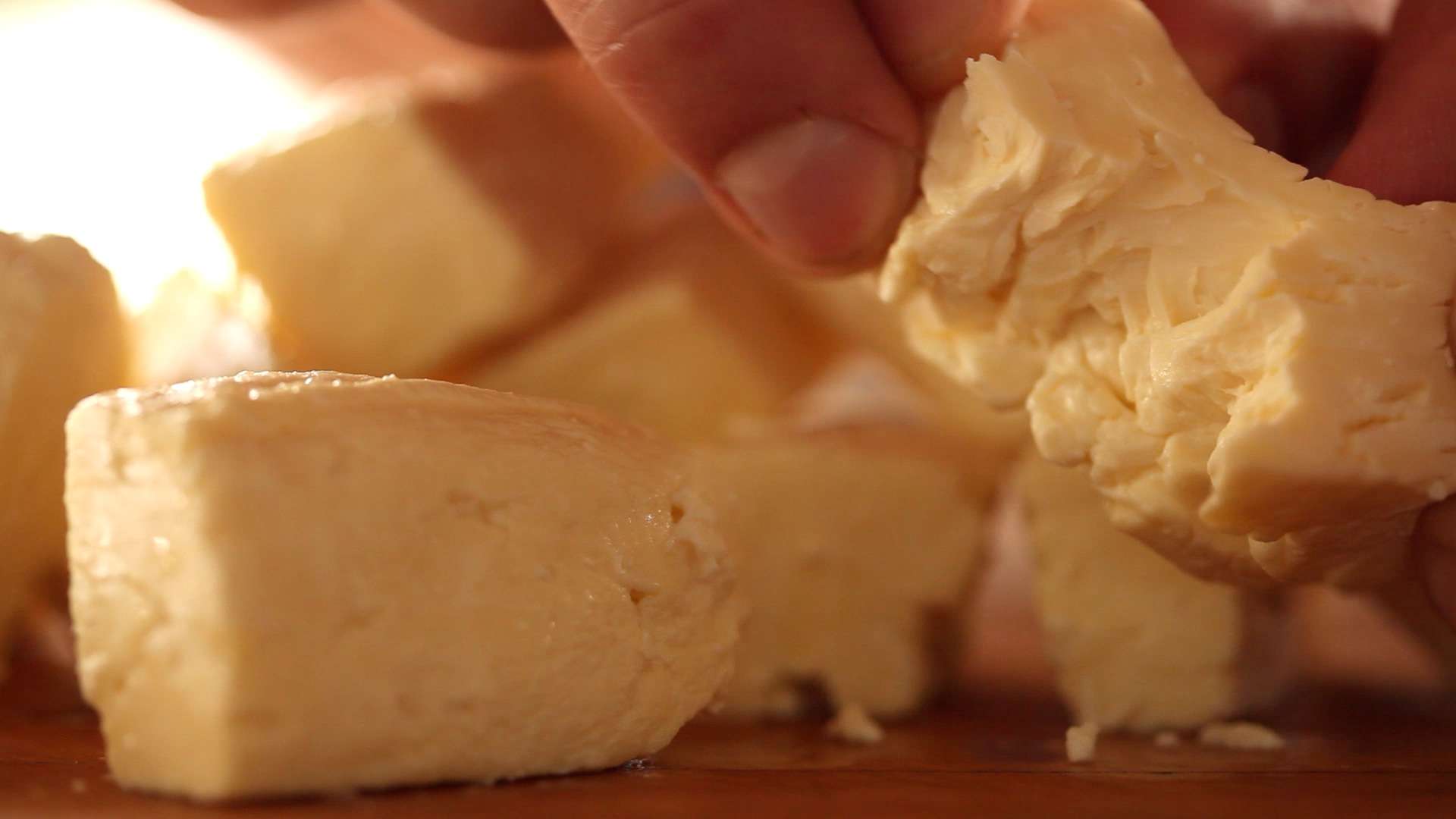
Photo courtesy of ChefSteps.
ChefSteps is a Seattle-based food and technology company on a mission to help people cook smarter. ChefSteps.com is designed to inspire creativity and encourage experimentation through high-quality interactive content, techniques, tools, and resources.